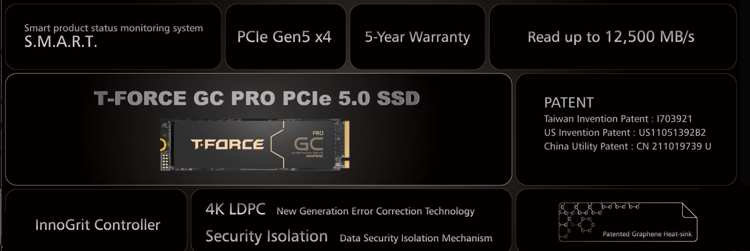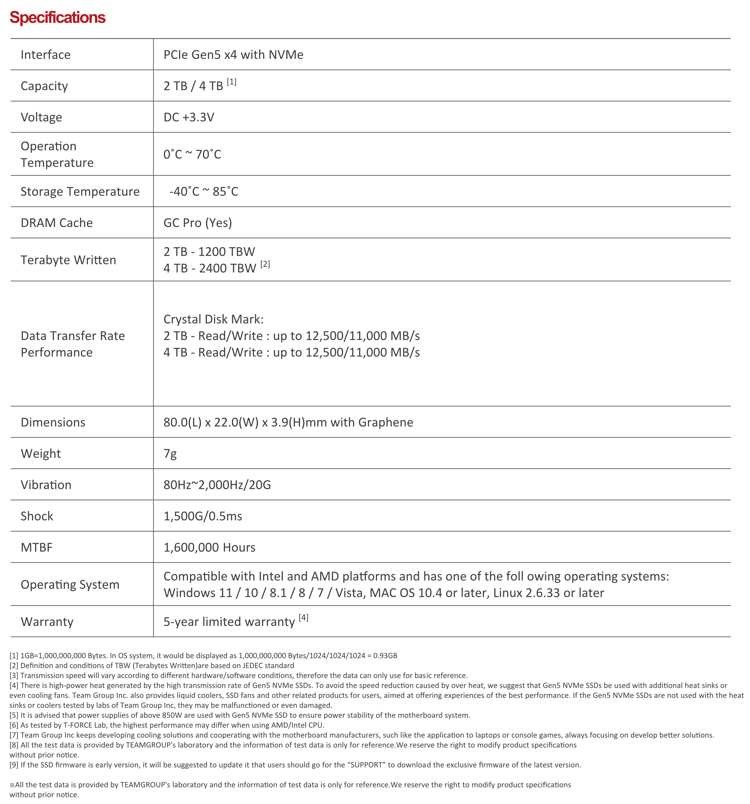Teamgroup Launches T-Force GC PRO PCIe 5.0 Up to 4TB M.2 SSD Gen5
Up to 12,500MB/s and 11,000MB/s sequential RW speeds
This is a Press Release edited by StorageNewsletter.com on August 1, 2024 at 3:17 pmTeam Group Inc.’s gaming brand launches the performance T-Force GC PRO PCIe 5.0 M.2 SSD.
Featuring a PCIe Gen5x4 interface and DRAM cache architecture, offering performance. With temperature control, combined with the company’s patented ultra-thin graphene heat spreader, it can be used with any motherboard’s native M.2 SSD heatsink to maximize cooling efficiency and performance. The read speed reaches up to 12,500MB/s, providing an unparalleled experience for gamers and users seeking high-speed read and write performance.
The T-Force GC PRO PCIe 5.0 SSD is available in 2 and 4TB capacities, supporting the latest NVMe 2.0 protocol. Sequential RW speeds reach up to 12,500MB/s and 11,000MB/s. It features Security Isolation to protect data from external malicious attacks and incorporates the newly evolved 4K LDPC (Low-Density Parity Check Code) technology to significantly extend its lifespan, enhancing both the security and durability of the SSD. Equipped with the firm’s patented graphene heat spreader (1), it ensures superior cooling performance for stable system operation.
Click to enlarge
Additionally, the S.M.A.R.T. monitoring software (2) allows users to monitor the quality and performance of the SSD. The T-Force GC PRO PCIe 5.0 SSD employs a high-speed interface, reinforced with advanced security and durability technologies, and is monitored by the S.M.A.R.T. software, catering to the needs of gamers and AI storage applications, meeting consumers’ high standards for hardware equipment.
The company is committed to protecting the planet and sustainable development. The T-Force GC PRO PCIe 5.0 SSD is manufactured in a halogen-free and lead-free environment, in compliance with RoHS environmental standards. The product packaging also uses recyclable materials, reflecting the firm’s dedication to environmental protection.

(1) U.S. Utility Patent (No. US11051392B2), Taiwan Invention Patent (No. I703921), China Utility Model Patent (No. CN 211019739 U)
(2) Taiwan Invention Patent (No. I751753)

















 Subscribe to our free daily newsletter
Subscribe to our free daily newsletter

